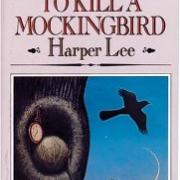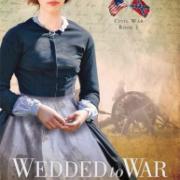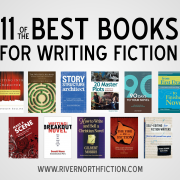7 Ways to Bolster Your Historical Fiction Research
Researching a historical novel is a daunting task, albeit fascinating. But if you know where to look, the process will be more effective, and quicker, too. Other than the two obvious sources of research--books and the Internet (such as digitized collections of primary sources, not Internet chat rooms)--here are seven other ways I have bolstered the research for my own novels. I hope they can be helpful to you, as well.
1) Site visits. Whenever possible, I visit the location I'll be using in my book, for three reasons:
I want to get a sense of place. I want to feel the weather, see the trees, hear the birds. What does this place do to one's spirit? Is it vast and wild? Close and suffocatingly hot? Is it tranquil? I love to put myself in my character's shoes, quite literally, whenever I can.
Usually there is a museum or two with not only excellent exhibits, but a great gift shop with little gems I would never find otherwise. During research for Spy of Richmond, the Museum of the Confederacy gift shop had real treasures for me. A Pictorial Tour of the White House of the Confederacy will be dog-eared and underlined as I'm writing Spy of Richmond.
If there are historical archives with primary source materials at a location, I want to get in there. The Adams County Historical Society archives in Gettysburg, Pennsylvania, was an absolute goldmine of information. My book Widow of Gettysburg was informed by dozens of eyewitness accounts I could not have found anywhere else.
2) Museum staffers. Whenever I write a historical novel, I pray that I will find a friend who works at a museum that specializes in my subject material. There is simply no substitute for a real-live person who will answer my questions. Among other things, Denise Doyle at the Seminary Ridge Museum counted the number of stairs in the old seminary building for a certain scene I was writing. When I asked Trevor Beemon at the Atlanta History Center about architecture and typical furnishings for a middle class Atlanta home during the Civil War, he went so far as to describe the color schemes and send me photos. (I pinned them on my Yankee in Atlanta Pinterest board, if you're interested.) Sara Henderson at Atlanta's Oakland Cemetery described what the cemetery looked like in 1863, right down to the foliage and wildlife. The list goes on. These people are absolutely invaluable to me. Anyone can do this. Hop online, find a museum you wish you could visit, and email the research specialist. Tell him or her what you're doing and ask for help. More often than not, I get a response, and we go from there. It's a beautiful thing.
3) Paper dolls and coloring books. When it comes to getting the fashions of the era right, I am a loyal fan of Peter Copeland's coloring books, and Tom Tierney's paper dolls. I learn what fabrics and colors were appropriate for which season, which fashions would have been worn by which generation (from the underwear to the accessories) and which occasion merited which ensemble. I love these books! They have them for several different eras, not just Civil War. Find them on Amazon. [[{"type":"media", "view_mode":"media_large", "fid":"993", "attributes":{"class":"media-image aligncenter size-full wp-image-1807", "typeof":"foaf:Image", "style":"", "width":"600", "height":"300", "alt":"7waystobolsterresearchcollage2"}}]]
4) Specialty experts. When I have a medical question, my go-to-gal is Jordyn Redwood, an E.R nurse and the author of medical thriller/suspense novels. She has this lovely Web site which features questions from authors/aspiring authors and her replies to those questions. Not only has Jordyn featured a few of my questions on her site, but she has graciously answered other random emails I've sent. Visit her Web site here: http://redwoodsmedicaledge.com/
For Civil War firearms, I consult Wesley Harris, who is in his 36th year of law enforcement. His broad range of experience includes virtually every position in a police agency from dispatcher to patrol officer to detective to police chief. He also serves on the Criminal Justice faculty of the University of Phoenix. He has been super helpful to me, and if you write anything to do with crime (including modern, of course) I'm sure he can be of help to you, too. Visit him at his Web site here: http://writecrimeright.blogspot.com/ His blog posts alone are extremely valuable!
5) Other authors. Jordyn and Wesley have established their own consulting services for authors, but think about the other authors you're friends with. If they have written about a similar time period or topic, they may already know that tiny detail you're looking for. Peter Leavell, author of Gideon's Call, answered my questions about Beaufort, South Carolina, as well as two other topics I know he's researched. When I remembered that Laura Frantz featured smallpox in her book The Frontiersman's Daughter, I pinged her to help clarify my understanding of the disease. Laurie Alice Eakes wrote The Midwives series, so I went to her to ask about possible injuries to babies during delivery. [[{"type":"media", "view_mode":"media_large", "fid":"994", "attributes":{"class":"media-image aligncenter size-full wp-image-1808", "typeof":"foaf:Image", "style":"", "width":"600", "height":"300", "alt":"7ways to bolster research collage1"}}]] I happened to know each of these authors already, but you need not rely on friendships to ask authors a specific question.
Recently, I read the nonfiction book Libby Prison Breakout, which was wonderful, but I still had a burning question. So I emailed the author, and guess what? He wrote me back with a thorough answer within 24 hours. Not all authors do that of course, but it's always worth a try. Finally, I utilize e-loops of other writers in my genre. Chances are, there is someone else out there who has the answer for what I'm looking for, even if that answer is an idea on where to search.
6) College professors. When I was researching Widow of Gettysburg, I had a lot of questions I wasn't finding answers for in terms of the cultural climate toward black people in Gettysburg. So I emailed a handful of professors at Gettysburg College and told them what I was looking for. Not surprisingly, most of them didn't have time to help me. But one of them gave me a list of ten sources to look into for all my answers. Jackpot! I was on my way.
7) Far-flung friends. This one was astounding for me to learn. Some people actually get a kick out of helping their author friends with research. My friend Bettina Dowell, who lives in Northern Virginia, went to the Library of Congress in Washington D.C. for me and scoured microfilms of old Atlanta newspapers until she found what I was looking for. Another friend, Mindelynn Young, was visiting Independence, Missouri, and took the opportunity to gather some information for me and get an in with a museum staffer who was more than willing to help. Other friends have pitched in to do online research when time was tight for me. I just sent them my questions and they sent me the answers. Think about your own friends and family. Would any of them consider it "fun" to help you--and are they in strategic locations so they could act as your proxy?
For a work of historical fiction to ring true, the research behind it must be solid. Readers will notice! The highest praise my first book earned came from the Historical Novel Society:
The research behind this shines. Green’s descriptions of the first hospitals, the horrors of battlefield medicine, and the extraordinary courage and vision of the women who took on this challenge carry the whole book. For this alone it’s worth the read.
That's what I want--to depict the truth while telling a compelling story. To do that, I gratefully and humbly rely on all the help I can get! The final product is worth the effort. [[{"type":"media", "view_mode":"media_large", "fid":"995", "attributes":{"class":"media-image aligncenter wp-image-2900", "typeof":"foaf:Image", "style":"", "width":"600", "height":"239", "alt":"4novels"}}]]






